

musei civici Marco
Schievenin (padova) |
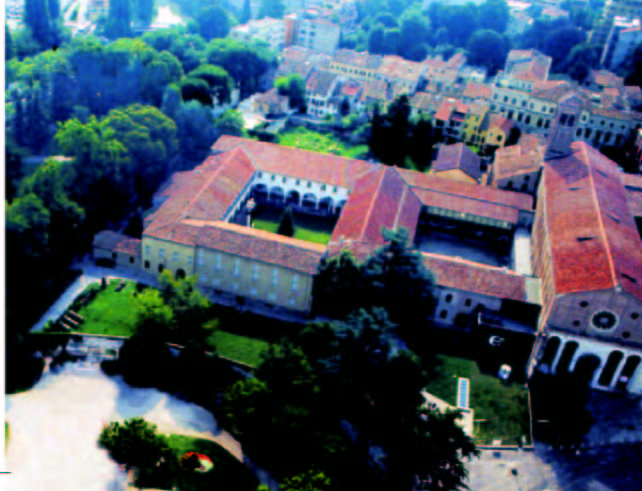 |
Il
complesso dei Musei Civici, ospitato nei chiostri dell’ex convento
degli Eremitani, accoglie il Museo Archeologico e il Museo d’Arte
Medioevale e Moderna. È annessa al complesso la Cappella degli
Scrovegni, affrescata da Giotto. |
The complex of the Musei Civici, located in the cloister of the former
monastery of the Eremitani, hosts the Archeological Museum and the Museum
of Medieval and Modern Art. The area includes the Cappella degli Scrovegni,
frescoed by Giotto. |
|
MUSEI
CIVICI |
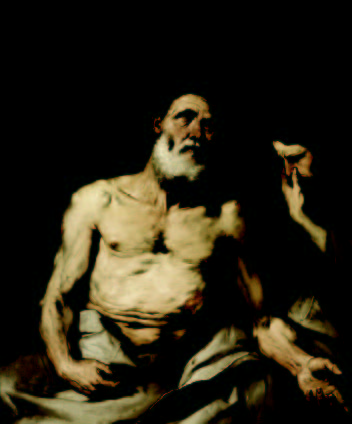
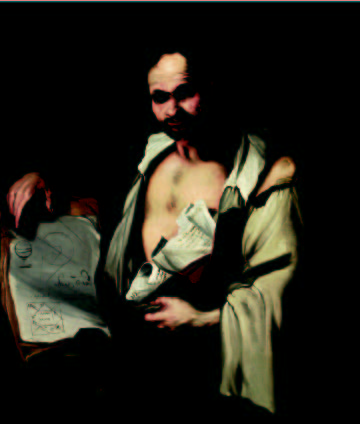 |
Luca
Giordano, Giobbe, 1652-53 |
Il
linguaggio pittorico delle due opere manifesta evidenti punti di contatto
stilistico e sembra collocare l’esecuzione dei due lavori all’epoca
del primo soggiorno veneziano di Luca Giordano, risalente al 1652-53.
Nei dipinti Democrito e Giobbe si può notare una poetica simile
e lo stesso gusto del contrasto tra i panni e la mollezza delle carni,
accentuata dall’incidenza della luce. Caratteristica
The pictorial language of the two works manifests obvious points of stylistic
contact and seems to locate the execution of the two works at the time
of the first Venetian sojourn of Luca Giordano (1652-53). In paintings
Democrito and Giobbe, it is worth noticing similar poetics and the same
taste for the contrast between the clothing and the softness of the flesh,
highlighted by the incidence |
| Marco
Schievenin Nato a / Born in Zevio (VR), 1979 Vive a / He lives in Milano e lavora in tutta Europa / and works in all Europe marco.schievenin@libero.it |
Dialogica,
2004 |
Marco
Schievenin colloca il suo lavoro in una sala che celebra i fasti della
pittura barocca, dove
Marco Schievenin locates his work into a room which
celebrates the splendour of Baroque painting, Guido Bartorelli |
|
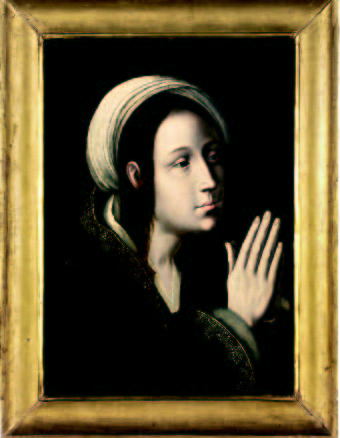
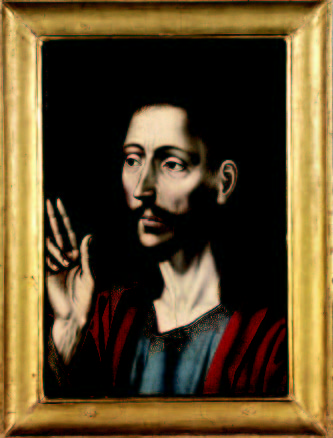 |
Cerchia
del “Maestro delle mezze figure” / Circle
of the “Master of the half-length”, Vergine orante,
1550-60 |
Le
opere sono attribuite al “Maestro delle mezze figure” che
fu attivo tra il terzo e quarto decennio del 1500. Di lui sono sconosciute
l’identità e la biografia, ma il suo catalogo, piuttosto
omogeneo, è noto con pezzi conservati anche in Italia. L’autore
riceve il nome dal repertorio formale gremito di giovani Sante e ricche
dame riprese a mezzo busto.
The works are ascribed to the “Master of the half length”,
who was active between the third and |
| Chiara
Tagliazucchi Nata a / Born in Modena, 1972 Vive e lavora a / She lives and works in Modena chiara.tagliazucchi@virgilio.it |
Senza
titolo , 2004 |
Le
gloriose stagioni della pittura religiosa ci hanno consegnato una serie
di soggetti contraddistinti da elementi iconografici fissi, che ne rendono
univoca la lettura. Chiara Tagliazucchi instaura un dialogo con due di
queste iconografie, la Vergine orante e il Cristo benedicente, affiancandovi
un suo dittico, che con quelli ingaggia un raffinato gioco di rimandi
a chiasmo. La giustapposizione disvela il divario incolmabile che ci separa
dall’arte di un tempo: le iconografie, con i loro riferimenti, non
rimangono che come frammenti di un passato lontano; l’immagine va
alla deriva nelle ambiguità di un vissuto troppo intimo e piccolo-emotivo
per essere risolto. Persistono le inquadrature
The
glorious seasons of religious painting delivered us a series of subjects
featuring fixed iconographic elements, which make its reading univocal.
Chiara Tagliazucchi sets up a dialogue with two of these icons, the praying
Virgin and the Blessing Jesus, by installing her diptych beside them,
to engage a refined game of chiasmus cross-references. The juxtaposition
reveals that the gap which separates us from the ancient art cannot be
bridged: the iconographies with their references remain as mere fragments
of a remote past; the image goes adrift into the ambiguities of a life
which is too intimate, too small-emotional to be solved. The ancient views
and colours persist and become some sort of aura, both dignifying and
disquieting at the same time, emanated by a man Guido Bartorelli |
|
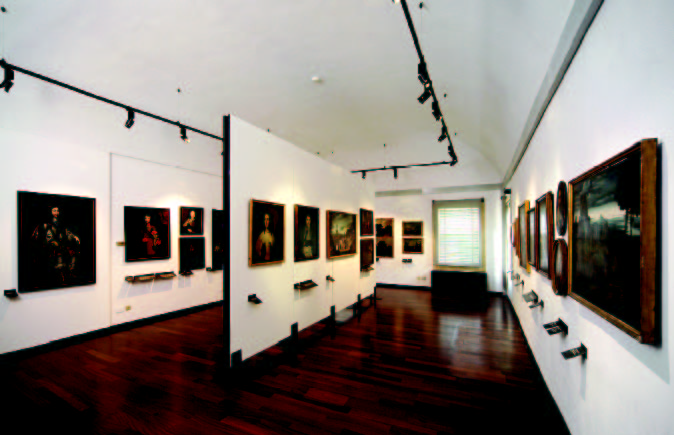 |
Collezione
Fiammingo-Olandese / Flemish-Dutch collection |
La collezione Fiammingo-Olandese, ospitata nella Quadreria Emo Capodilista, annovera opere di pittori collocabili tra la fine del Quattrocento e il Settecento, in particolare di ambito anversese, che suscitarono l’attenzione dei pittori Veneti del tempo. I dipinti fanno riferimento sia ai modi della ritrattistica ufficiale (Ritratto di Dama di Gerard van Honthorst e il Ritratto del Principe Maurizio di Orange Nassau di Michiel Jansz van Mierevelt), dallo stile sottile e analitico, sia alla pittura di genere e al paesaggismo,caratterizzato da un tipo di veduta che va evolvendosi in senso realistico. The Flemish-Dutch collection, hosted in the Quadreria Emo Capodilista, numbers works of painters who can be located between the late 15th and the 18th centuries (in particular of the Antwerp environment) who aroused the attention of the Venetian painters of that time. The paintings relate to both the modes of the official portrait painting (Lady’s portrait by Gerard van Honthorst and the portrait of Prince Maurice of Orange Nassau by Michiel Jansz van Mierevelt), of subtle, analytical style, and to genre and landscape painting, featuring a type of view which is evolving towards realism. |
| Mirjam
van Tilburg Nata a / Born in Sint Odiliënberg, 1980 Vive e lavora a / She lives and works in Amsterdam mwamvtilburg@hotmail.com |
Mirjam
van Tilburg, 2004 |
Antivigilia
di ferragosto: incontro Mirjam che dal giorno prima va percorrendo le
sale del museo a
I met Mirjam two days before the mid-August holidays:
she had been walking along the rooms of Guido Bartorelli |
|